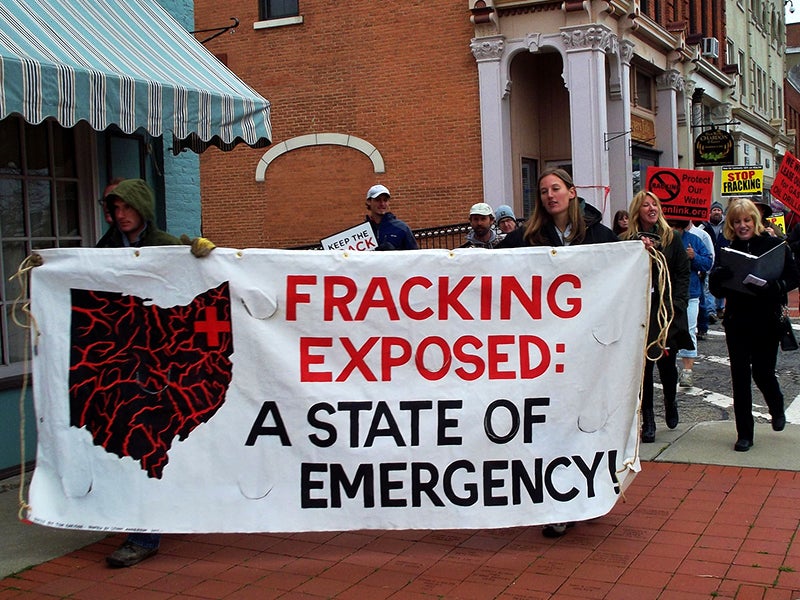The Fracking Trade-Off: Dirty Energy for Explosive Accidents
In the middle of a beautiful Ohio summer, explosions, fires and a massive fish die-off at a fracking well emphasized the dangers inherent in working in the fracking industry.

This page was published 10 years ago. Find the latest on Earthjustice’s work.
On the morning of June 28, 2014, a snapped hydraulic line at an Ohio fracking well began spraying hot chemicals onto nearby trucks. In total, 20 vehicles were engulfed in flames and 30 explosions followed. One firefighter was treated for smoke inhalation and 25 families living nearby were evacuated. In the days following, the dangers of fracking and of the lax regulation governing the industry became all too clear.
Soon after this fracking accident, or “fraccident,” dead fish began floating belly up in a nearby tributary of the Ohio River. Nathan Johnson, an attorney with the Ohio Environmental Council, told Mother Jones the scene resembled “a miles-long trail of death and destruction” as about 70,000 dead fish rotted along a five-mile span.
But the impact of this chemical spill went beyond tens of thousands of dead fish. About two miles downstream from where the tributary meets the Ohio River is a public intake station that collects drinking water for West Virginia residents.
An EPA report on the incident noted that “significant quantities of water and unknown quantities of products” from the well ended up in the nearby waterway. Tests of runoff several days later revealed the presence of 14 chemicals, and a test of surface water found five chemicals downstream from the site.
Although the federal EPA and the Ohio EPA were testing the water, neither had a list of chemicals being used at the fracking site to test against until several days after the explosion. An environmental official present at the scene confided to Mother Jones, “We knew there was something toxic in the water. But we had no way of assessing whether it was a threat to human health or how best to protect the public.” All the while, citizens living downstream continued to drink the water.
According to a law passed in 2012, companies that frack in Ohio must reveal the chemicals they use, but only 60 days after drilling is completed at a site. And ingredients that are considered “trade secrets” do not have to be revealed except in cases of emergency.
In this emergency, Halliburton, the company fracking at the site, did not provide this information to the EPA until July 3, five days after the accident. Halliburton told firefighters and the chief of the Ohio Department of Natural Resources (ODNR) which chemicals were released, but the ODNR was either legally barred from sharing the information or chose to keep other agencies in the dark.
The Ohio public also remained in the dark about the chemicals for several days. After this June 2014 fraccident, Ohio Gov. John Kasich, who signed legislation allowing for the “trade secrets” exemption, admitted, “We want people to know what the fracking fluid contains.”
Fraccidents like these reveal the dangers inherent in fracking near homes and water sources, and in allowing companies to conceal their chemicals of choice. Perhaps it’s time for Ohio to turn to a safer alternative and begin exploring its ample wind energy opportunities!
To see just how common fraccidents are, check out Earthjustice’s newly updated map Fracking Across the United States. In the past four years, more than 200 fraccidents occurred in the U.S., including gas well blowouts, waste water spills, pipeline explosions, traffic accidents, air and water contamination and earthquakes. We’re keeping track.